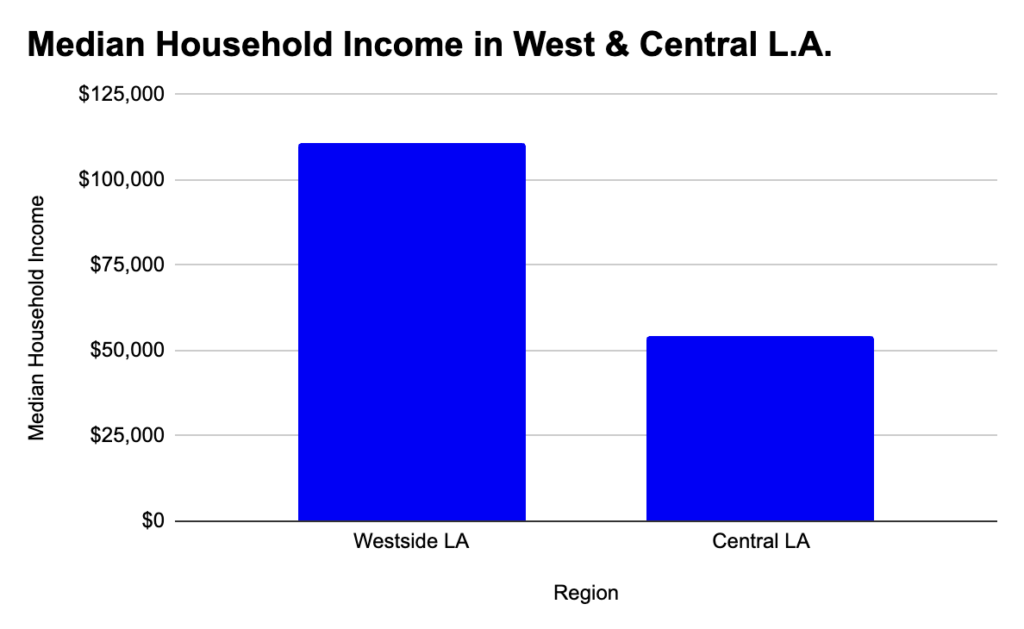The city of Los Angeles is home to 3.9 million residents whose day-to-day experiences vary according to where they live and the characteristics of each neighborhood. Our findings reveal that Los Angeles has major socioeconomic inequality across regions which translates into large crime rate disparities. West Los Angeles and Central Los Angeles represent the biggest gap in regional crime rates. Below, we will use these two regions as a case study to explore the causal and correlative factors that contribute to L.A. crime rate disparities.
Over 3 years, there have been roughly ten thousand crimes reported per square mile in the Central Los Angeles region. Conversely, West Los Angeles only experienced 500 reported crimes per square mile. This demonstrates the clear disparity in reported crime between the two regions. See Fig. 1.

A comparison between the median household incomes of Westside L.A. and Central L.A. reveals a clear income disparity. Source: https://www.point2homes.com/US/Neighborhood/CA/Los-Angeles/West-Side-LA-Demographics.html
Who gets what?
Disparities in these crime rates can be broken down into different segments to further understand why it occurs. Unequal resource and opportunity distribution across the city of Los Angeles can account for much of this crime gap. Varied access to resources and opportunities, such as healthcare, recreational facilities, and social services, can contribute to crime disparities. Neighborhoods lacking these resources may experience higher levels of stress, frustration, and limited avenues for personal and community development. Without positive outlets, people in resource deprived regions such as Central LA may be susceptible to engaging in crime as a means of filling their time. Below, we will break down these individual correlative factors that affect West LA and Central LA respectively.
Gaps in household income & employment type variation
One glaring difference between Central LA and West LA is the difference in population below the poverty line and median income level. West LA has a significantly higher median household income which reflects its proportion of white-collar to blue-collar jobs. Conversely, Central LA’s lower median income reflects a higher proportion (14%) of its population that performs blue-collar work. Existing literature tackling crime consistently notes income inequality as an aggravator of crime generally and certain types of crime such as burglary or vehicle theft. In one study, researchers found a strong relationship between income inequality and burglary. This corroborates another finding in our data which shows high rates of burglary and vehicle theft across Central LA.
Gaps in access to education
Educational variation across LA may be a contributing factor as well as school funding becomes largely dependent on local donors and tax structures. Although Los Angeles has an education model which attempts to counter these differences, there is ultimately still variation across regions.